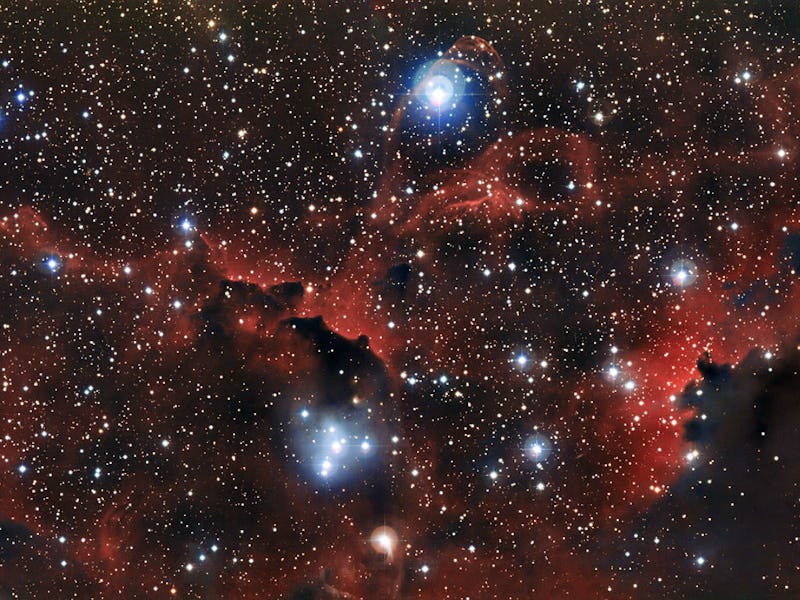A team of North American astrophysicists has found a very large, very dim blob and it challenges what we think about dark matter, aka the stuff that makes up most of the universe.
The dark galaxy known as Dragonfly 44 is about 330 million light years away, and weighs about as much as our Milky Way galaxy. However, the stars visible within the galaxy account for just 0.01 percent of that mass, according to results published Thursday in Astrophysical Journal Letters.
“It basically looks like a blob: an elliptical, featureless, very faint, big blob,” lead author and Yale astrophysicist Pieter van Dokkum tells Inverse. “The first time I saw it was when I was inspecting an image of the Coma cluster (a big group of galaxies) that we had taken with the Dragonfly Telephoto Array. There were many extremely faint blobs in the image, and we had no idea what they were. It was a puzzle in itself to figure out that the blobs are actually part of the Coma cluster of galaxies.”
The researchers calculated the mass by observing the velocity of the stars, which is related to the forces of gravity acting upon them. Dragonfly 44’s stars are behaving as if they are in a galaxy the size of the Milky Way, except they are much more diffuse.
That difference must be accounted for by some unseen force: dark matter.
Dragonfly 44 is dim and diffuse compared with neighboring galaxies. The bars indicate a distance of 10 kiloparsecs, or 32,616 light years.
Scientists are still trying to figure out what exactly dark matter is and prove conclusively that it exists. They assume it must, based on observations of the universe. Theoretically, it makes up 85 percent of all matter in existence.
“We always thought that dark matter and normal matter were tightly coupled: that once you know how much dark matter a galaxy has, you know how many stars it has,” says van Dokkum. “Dragonfly 44 changes that notion: it seems there is a huge variety.”
The next step is finding other galaxies like this one that are closer to Earth, so they may be studied in more detail.
“There are two promising avenues to detecting the elusive dark matter particle (if it exists!): in a laboratory on Earth, or by looking at galaxies that are almost completely made of the stuff,” says van Dokkum. “The new discovery gives us a new kind of galaxies to look at: very massive galaxies that are made almost entirely of dark matter. The key is now to find a few galaxies like Dragonfly 44 that are very close to us: at 330 million light years distance, Dragonfly 44 is not far away by cosmological standards, but not exactly ‘next door’ either. Those nearby galaxies could then be studied in detail with telescopes that might detect a faint signal from the dark matter particle.”
